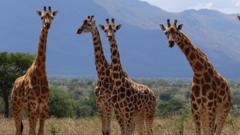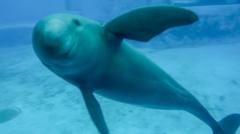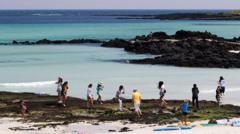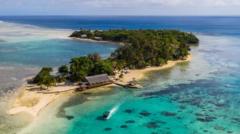Australia's Northern Territory (NT) is experiencing a burgeoning saltwater crocodile population, demanding a delicate balance between conservation efforts and public safety measures.
To Conserve or Cull: Managing Australia's Crocodile Crisis
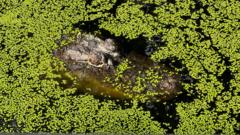
To Conserve or Cull: Managing Australia's Crocodile Crisis
The Northern Territory grapples with a booming saltwater crocodile population and the safety of its residents.
In Darwin Harbour, as dawn breaks, government ranger Kelly Ewin finds himself grappling with the realities of his job: catching and managing the notorious saltwater crocodiles. This region, now home to an estimated 100,000 of these apex predators, faces a dilemma that shifts from conservation to management due to the rapid recovery of the crocodile population.
Despite being nearly hunted to extinction in the mid-20th century—when their numbers plummeted to around 3,000—the species rebounded dramatically after the hunting ban in 1971, becoming a protected species. The responsible management of crocodile numbers is now essential to ensure the safety of both residents and tourists in this coastal region, famously termed the “Crocodile Capital of Australia.”
Ewin, whose work involves setting and checking crocodile traps around Darwin, acknowledges that while he may not capture every crocodile, reducing numbers in the harbour diminishes the risk of human encounters. The breeding season currently sees increased crocodile activity, and the government's newly approved crocodile management plan has expanded the number of crocodiles that can be culled annually, reflecting an attempt to promote a safe coexistence with these formidable creatures.
Educational programs such as "Be Crocwise" also play an important role in ensuring public safety. This initiative not only enlightens the community about crocodile behavior but has gained attention internationally, with places like Florida and the Philippines looking to implement similar strategies to promote human and crocodile coexistence.
Tourism is also a significant aspect of the NT's crocodile narrative; boat tours for "croc jumping" attract visitors eager to witness the terrifying beauty of these reptiles. Moreover, there is a lucrative crocodile farming industry that supplies luxury goods markets while advocating for responsible wildlife management.
While local Aboriginal communities participate in and benefit from sustainable practices surrounding crocodile farming, there is still controversy surrounding animal welfare within these facilities. Critics highlight that though they aid in conservation, the farming conditions can challenge their natural social behaviors, creating ethical debates around the industry.
The issue transcends local concerns, raising questions about how other regions manage human-wildlife encounters. As experts emphasize the inherent dangers of crocodiles, the NT finds itself navigating a challenging sphere of conservation, public safety, and economic opportunity, ultimately revolving around a creature that has long captivated human attention.
As discussions evolve regarding culling versus conservation, one fact is clear: the saltwater crocodile remains a powerful symbol of the struggle between humanity and nature, inviting scrutiny and consideration at every turn.
Despite being nearly hunted to extinction in the mid-20th century—when their numbers plummeted to around 3,000—the species rebounded dramatically after the hunting ban in 1971, becoming a protected species. The responsible management of crocodile numbers is now essential to ensure the safety of both residents and tourists in this coastal region, famously termed the “Crocodile Capital of Australia.”
Ewin, whose work involves setting and checking crocodile traps around Darwin, acknowledges that while he may not capture every crocodile, reducing numbers in the harbour diminishes the risk of human encounters. The breeding season currently sees increased crocodile activity, and the government's newly approved crocodile management plan has expanded the number of crocodiles that can be culled annually, reflecting an attempt to promote a safe coexistence with these formidable creatures.
Educational programs such as "Be Crocwise" also play an important role in ensuring public safety. This initiative not only enlightens the community about crocodile behavior but has gained attention internationally, with places like Florida and the Philippines looking to implement similar strategies to promote human and crocodile coexistence.
Tourism is also a significant aspect of the NT's crocodile narrative; boat tours for "croc jumping" attract visitors eager to witness the terrifying beauty of these reptiles. Moreover, there is a lucrative crocodile farming industry that supplies luxury goods markets while advocating for responsible wildlife management.
While local Aboriginal communities participate in and benefit from sustainable practices surrounding crocodile farming, there is still controversy surrounding animal welfare within these facilities. Critics highlight that though they aid in conservation, the farming conditions can challenge their natural social behaviors, creating ethical debates around the industry.
The issue transcends local concerns, raising questions about how other regions manage human-wildlife encounters. As experts emphasize the inherent dangers of crocodiles, the NT finds itself navigating a challenging sphere of conservation, public safety, and economic opportunity, ultimately revolving around a creature that has long captivated human attention.
As discussions evolve regarding culling versus conservation, one fact is clear: the saltwater crocodile remains a powerful symbol of the struggle between humanity and nature, inviting scrutiny and consideration at every turn.

